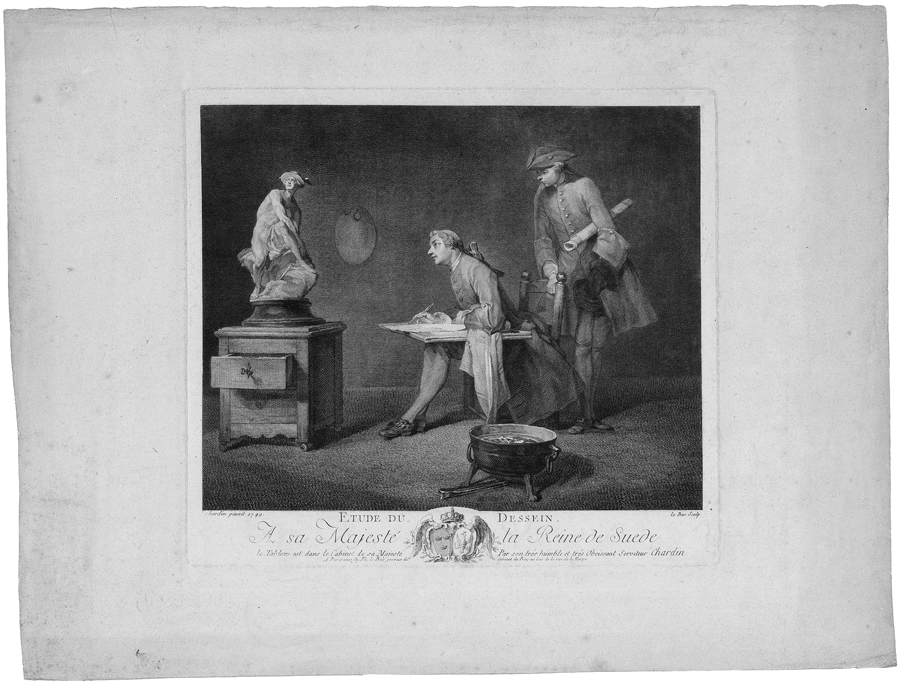Loading the page ...
Jean-Baptiste-Siméon Chardin
(1699–1779, Paris)
L’Étude du Dessin (The Drawing Lesson). Etching and engraving by Jacques-Philippe Le Bas (1707–1783). 29.3 x 32.8 cm. 1749. Portalis-Béraldi 4; Le Blanc 202; Bocher 18 II.
Together with its pendant La bonne education, this engraving reproduces two paintings by Chardin that the artist had executed around 1747/48 as a commission for the Queen of Sweden. Both of these reproductive engravings by Jacques-Philippe Le Bas were exhibited at the Paris Salon of 1755.
In the 1740s Chardin painted almost exclusively genre scenes with figures, the popularity of which was enhanced by the diffusion of reproductive engravings. In 1738 Étienne Fessard made the first engraving after a painting by the artist, an event that was announced in the Mercure de France. This was to be followed in subsequent years by an impressive number of other reproductive engravings, many of them by Charles Nicolas Cochin the Elder (1688–1754), which did a lot to spread Chardin’s fame in Europe.
In a sparsely furnished room we see a youthful draughtsman at work. He is sitting on a chair with a drawing board on his knees. The upper part of his body, which is bent forward over the board, betrays an intense concentration as he critically eyes the object of his study, a terracotta or plaster model of the famous Mercury by the sculptor Jean-Baptiste Pigalle (1714–1785). Behind the draughtsman a young man wearing a three-cornered hat stands slightly stooped over the back of his chair and observes his work with interest. He is probably a classmate, as the roll of paper under his arm suggests. The allusion to Pigalle’s sculpture was intended by Chardin to honour a friend and colleague. Pigalle had created the terracotta model of Mercury Putting on His Sandals in Rome between 1736 and 1740. The work established his fame and secured his admission to the Academy. A larger and slightly different version in marble was acquired by the Prussian monarch Frederick the Great and is now in Berlin (Bode-Museum, Sculpture Collection). Chardin himself also possessed a version of Mercury.
Chardin’s L’Étude du Dessin is not just one of the most appealing and original portrayals of a young artist at work; the scene also generates a sense of recently acquired self-confidence. The assiduous art student proves that one can become a competent draughtsman not only by following classical models, but also by studying the works of contemporary masters (see catalogue Chardin 1699–1779, edited by Pierre Rosenberg, Paris 1979, pp. 289–293).
A superb, clear and sharp impression with large margins around the platemark. Minor discoloration and foxing, slight signs of ageing, otherwise in very fine condition.
